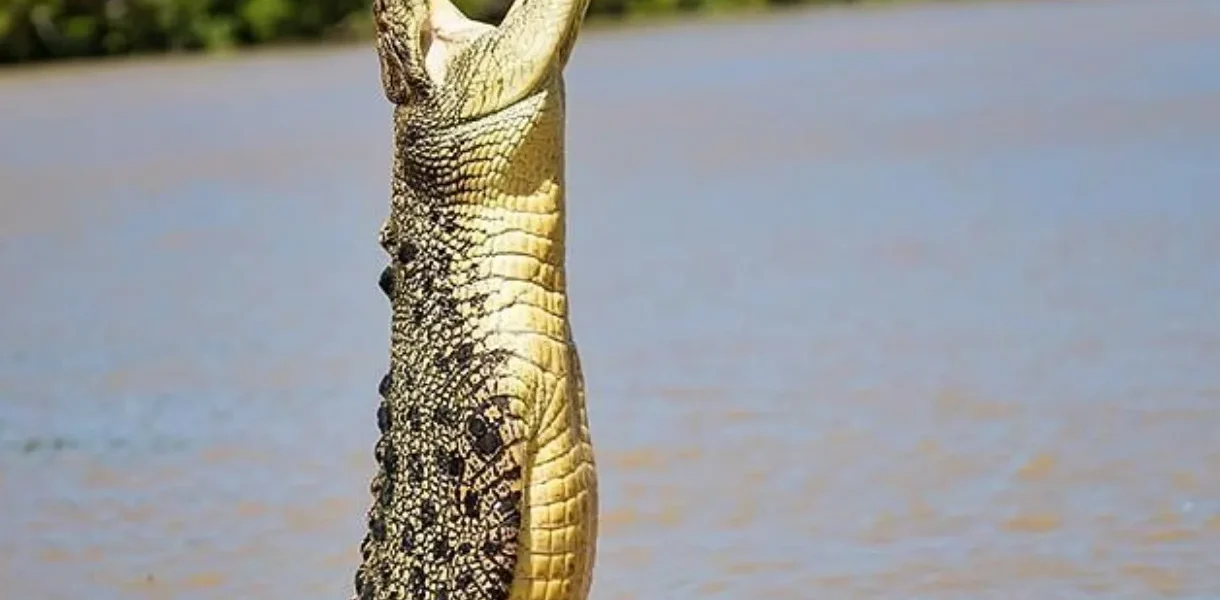Jumping crocodiles in the wild is one of the most exhilarating wildlife experiences you’ll ever have, especially in Kakadu National Park, Adelaide River or the Northern Territory of Australia. These are the biggest reptiles on earth. They are fascinating and deadly. But like any wild animal, proper safety precautions must be taken to have an awesome and safe wildlife experience. Whether you’re on a river cruise, a croc cruise or observing from land, knowing the behaviour of crocs and the risks involved is key.
Choose a Reputable Croc Cruise Operator
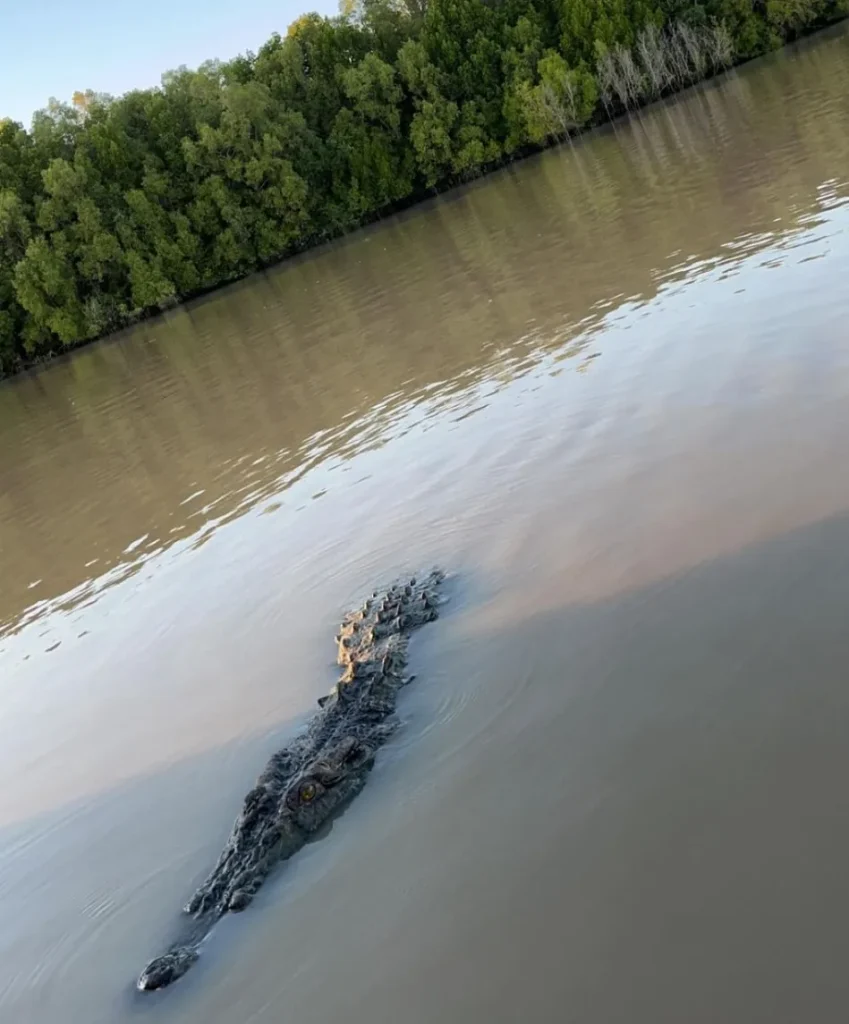
If you want to see saltwater crocodiles in the Adelaide River or Kakadu National Park, you need to choose a reputable tour operator. Licensed operators like Adelaide River Queen Jumping Crocodile Cruises or Adelaide River Cruises offer an expert-guided experience where you can safely see these monsters jumping out of the water.
Licensed guides are trained in crocodile behaviour and emergency procedures. Whether you’re cruising through the river systems of Tropical North Queensland or navigating the wetlands of the Northern Territory, experienced operators can mitigate the risks.
Keep a Safe Distance from Wild Crocodiles
Crocodiles are predators and are very powerful. Whether you’re on a croc cruise or walking on land, always keep a safe distance from wild animals. Saltwater crocodiles live in brackish water and murky water where they can hide, so don’t get too close to the water’s edge.
In areas like Cape Tribulation, Emmagen Creek or the Mary River, be extra careful near creek mouths or freshwater billabongs, as these are hotspots for crocodile activity. If you’re visiting national parks like Gregory National Park, Nitmiluk National Park or Djukbinj National Park, pay attention to crocodile warning signs and stay within designated areas. Crocodiles can move quickly and silently in water, so they’re hard to detect.
Follow Safety Directions from Tour Guides and Park Rangers
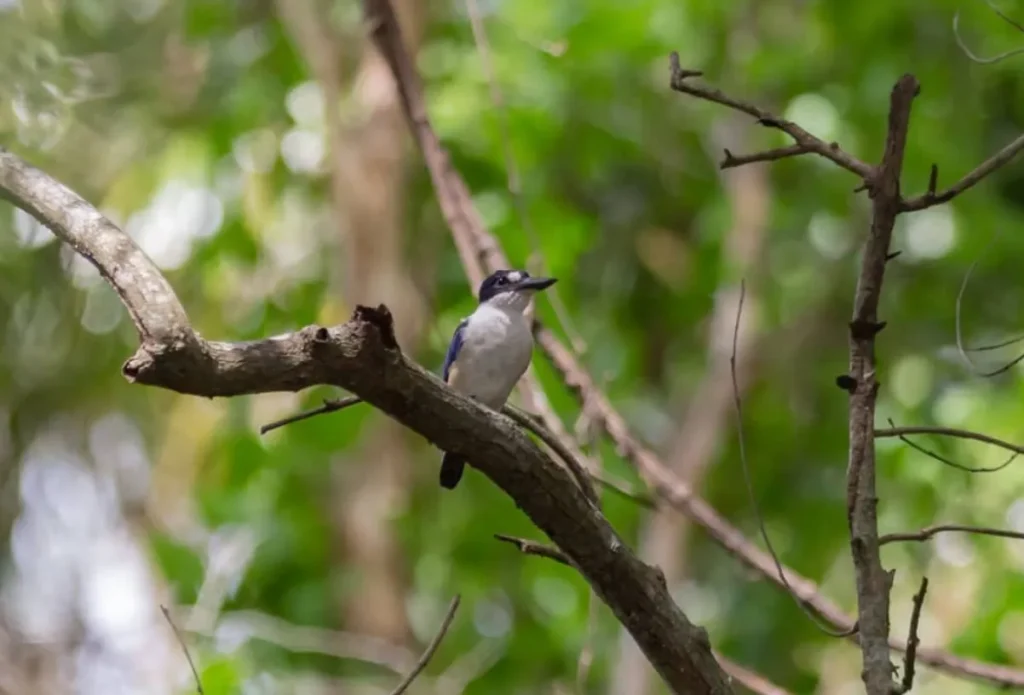
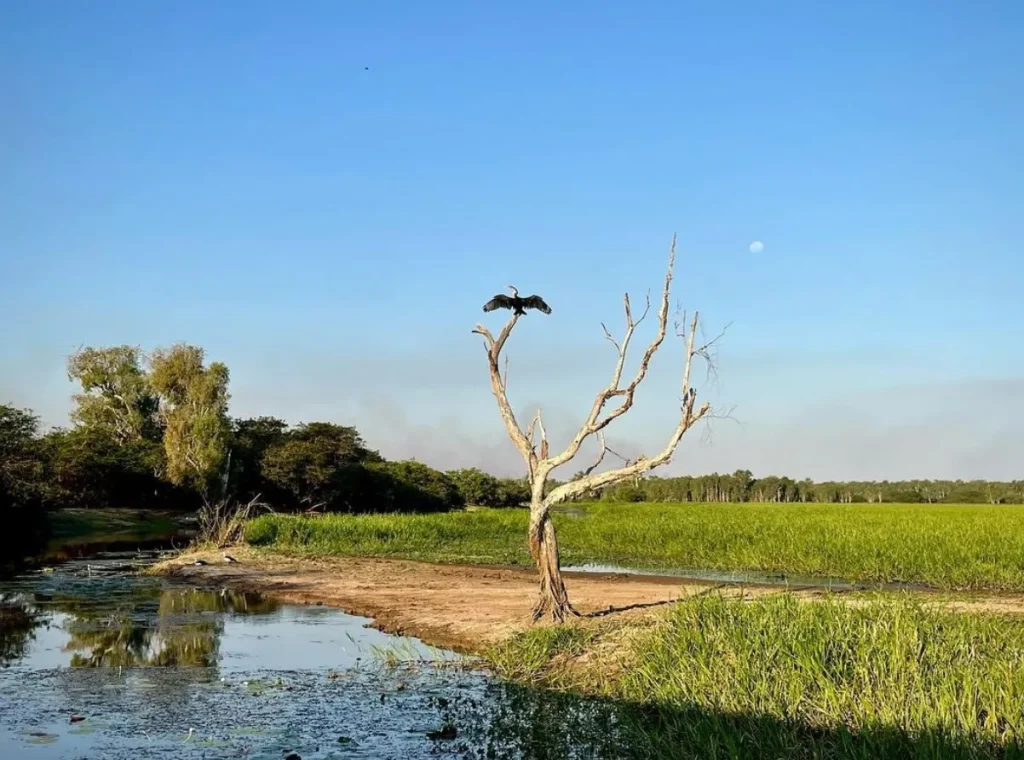
Tour guides and park rangers in places like Yellow Water and Djukbinj National Park know the local wildlife and the river systems where crocodiles live. Always follow their safety directions and rules that limit close contact with wild crocodiles. If you’re on a river cruise, listen to the safety briefing before you depart and follow instructions throughout the trip.
Rangers know the crocodile slide marks and where saltwater crocodiles congregate. They may advise on the best places to see crocodiles while being absolutely safe, like the famous crocodile viewing spots in the Adelaide River or Corroboree Billabong. They’ll also advise on areas to avoid where crocodiles are nesting or where they’re more active during breeding season or wet season.
Don’t swim in Murky Water or Cross Water
Crocodiles are more likely to attack when they feel threatened or startled, especially in murky water where you can’t see a thing. Don’t cross water crossings or swim in water holes where crocodile risk is high. Even where there are no crocodiles, always assume there could be a risk, especially in fresh or brackish water near the coast.
The wet season brings higher water levels and more wild crocodiles. During this time crocodiles are more active and rivers are more difficult to navigate safely. Always wait for an experienced guide or park ranger to say it’s safe to go near the water.
Don’t Feed Crocodiles or be Dumb
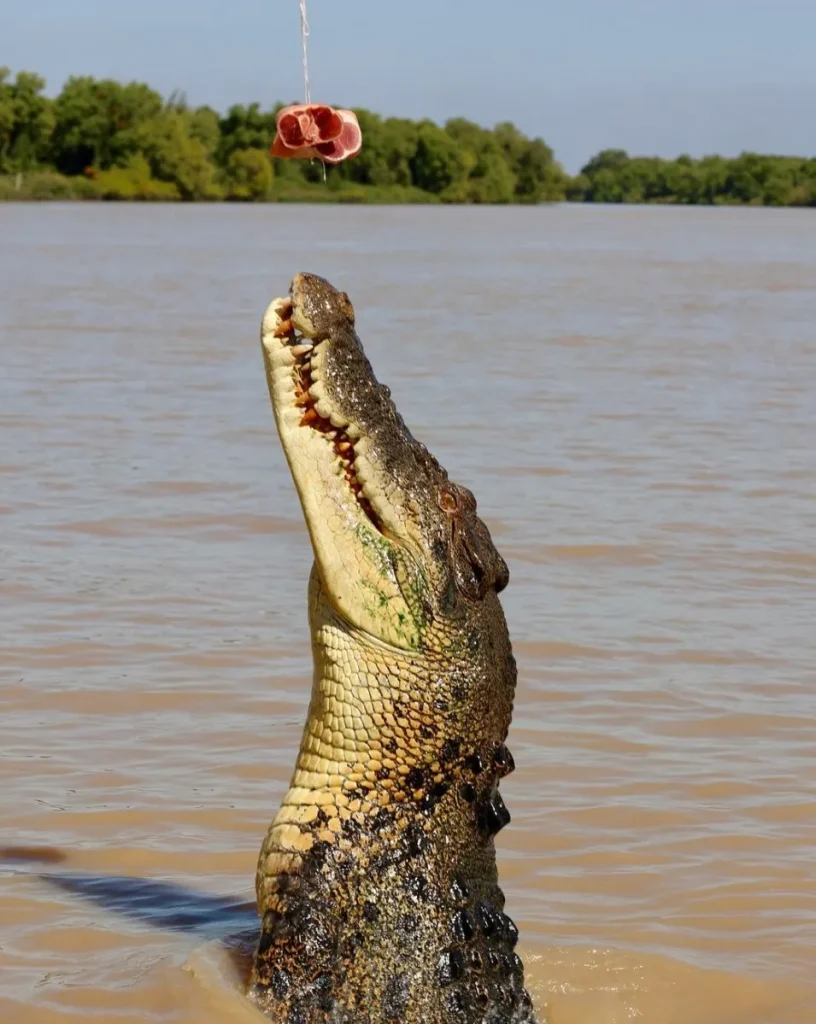
Feeding crocodiles in the wild is not only dangerous but illegal in most places. At places like Crocodylus Park or Hartley’s Crocodile Adventures, experts feed crocs under controlled conditions, so animal welfare experts manage the experience. Feeding crocodiles in the wild can change their natural behaviour and increase the risk of crocodile attacks.
When on a boat cruise or near a boat ramp, don’t dangle anything or body parts over the edge. Crocodiles can leap from the water with ease. Whether you’re watching native birds like Magpie Geese or White-Breasted Sea Eagles from the boat, always keep your hands and feet inside the boat so you don’t attract crocodiles.
Stay Still and Don’t Move Sudden Around Crocodiles
One of the main rules when observing crocodiles in the wild is to stay calm. Saltwater crocodiles and freshwater crocodiles are very responsive to movement. Sudden, jerky movements or loud noises can startle them, especially when they feel threatened.
If you’re on a crocodile cruise along the Adelaide River or visiting a park like Rainforestation Nature Park, stay calm and don’t make sudden movements. Even on dry land, stay alert and don’t lean over riverbanks or the edge of boats, as crocodiles can leap several meters from the water.
Know the Best Times and Seasons to See Crocodiles
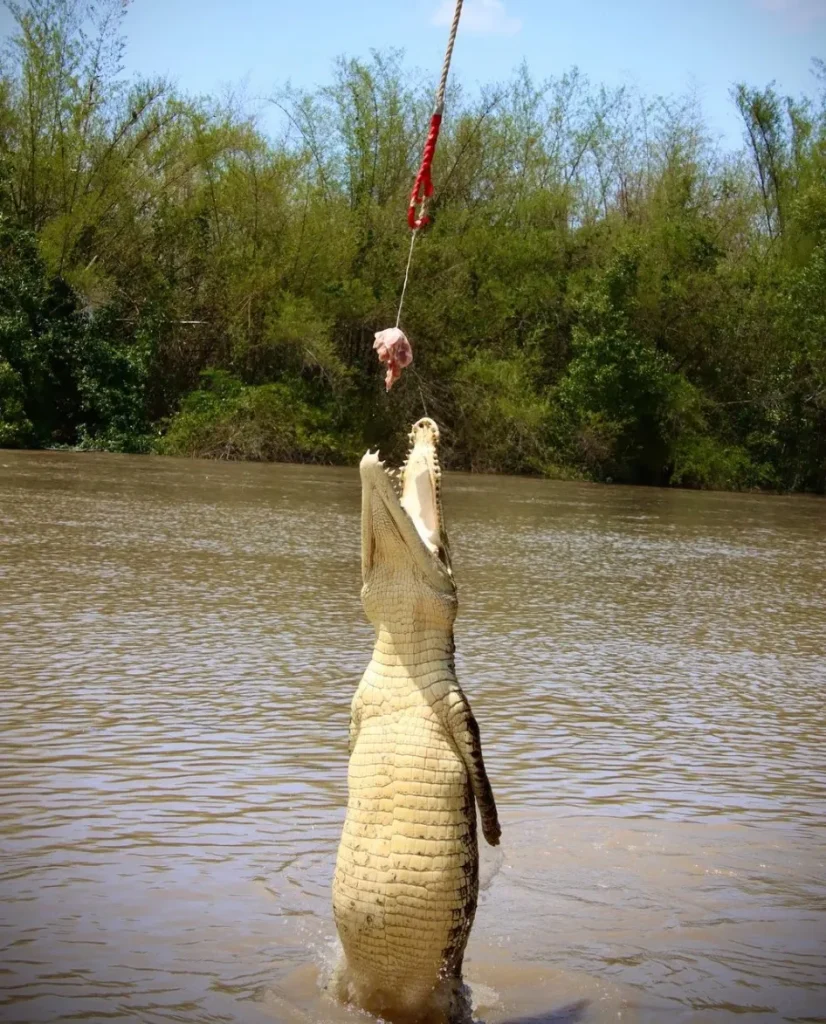
Timing is everything when it comes to your crocodile tour. During the dry season, rivers and estuaries are lower, and crocodiles can be seen basking on riverbanks or mudflats. In the wet season, the water is higher, and crocodiles spread out over a larger area, making it harder to see them.
Breeding season is another consideration. Crocodiles can be more aggressive and territorial during this time so it’s even more important to follow the safety guidelines. Tour operators like Adelaide River Queen Jumping Crocodile Cruise know these seasonal changes and adjust their tours to give you both safety and the best viewing.
Don’t Swim in Crocodile Infested Waters
Even though hotel pools and designated swimming areas in parks like Josephine Falls are safe, don’t swim in natural bodies of water in crocodile country. Crocodiles are found in creek mouths, freshwater billabongs and estuaries. Places like Emmagen Creek or Cape Tribulation might look inviting but are a serious risk. Always assume that crocodile countries are dangerous and follow local authority instructions.
In places like Arnhem Land or Corroboree Billabong, where crocodiles are common, stay on designated paths and don’t enter areas where crocodile slide marks or other signs of their presence are visible.
Learn About Crocodiles Before You Go
Before you go on a wildlife experience in the Northern Territory, visit wildlife sanctuaries like Crocodylus Park or animal welfare experts. These places often have educational programs where you can safely see baby crocs and learn about crocodile behaviour in a controlled environment. This will help you understand these amazing creatures and how to encounter them in the wild safely.
At places like Hartley’s Crocodile Adventures or Rainforestation Nature Park you can also see native birds, reptiles and Australian natives to add to your adventure.
FAQ
Can I see jumping crocodiles without a tour guide?
No. Licensed operators like Adelaide River Cruises know how to keep you safe and give you a great crocodile experience.
What do I do if I fall into water near crocodiles?
Stay calm and get out slowly. Don’t move or splash as this will attract the crocodile’s attention.
Can I take photos of crocodiles?
Yes but safety first. Never lean over the boat or get too close to the crocodile for a better shot.
When do I go on a crocodile cruise?
Dry season is best for crocodile tours as the water is lower and you can see crocodiles easier. Wet season can be harder but just as fun.
What do I need to do on a crocodile cruise?
Follow the guide’s instructions, sit down and keep hands and feet inside the boat. Never dangle anything overboard or move suddenly.
